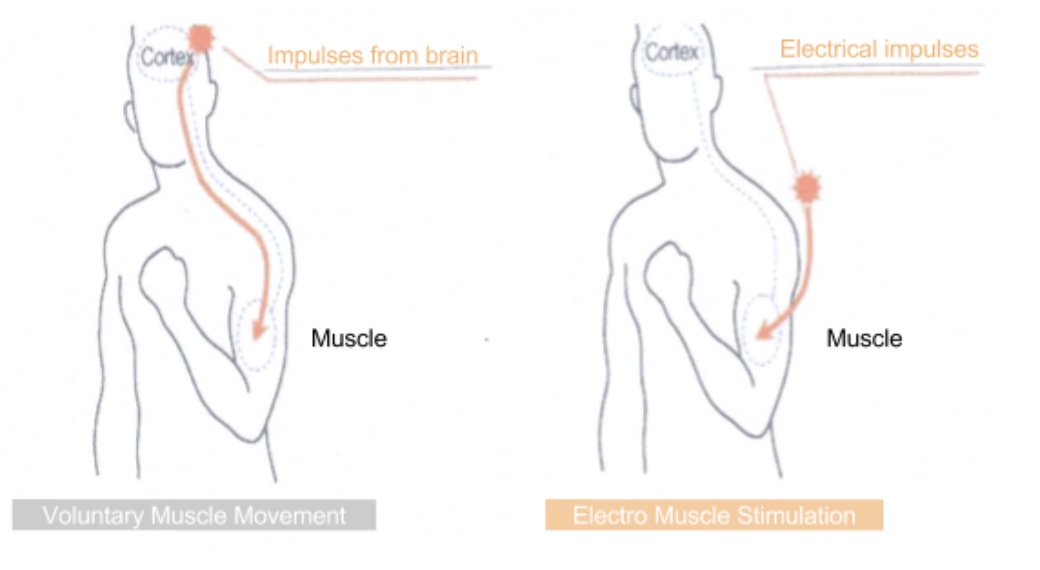How does EMS training work?Updated 2 years ago
Most muscle contractions occur when the brain sends a signal through your central nervous system to instruct your skeletal muscles to contract. These muscles come in pairs, one to move your bone in a particular direction, and the other to move it back. Unlike internal organs and cardiac muscles, skeletal muscles are voluntary, meaning that they require a trigger (such as a brain signal) to activate.
EMS works by mimicking those brain signals, sending a low-frequency impulse directly to your muscle via an electrode placed on the skin. This impulse replicates the brain signal and results in an extremely efficient muscle contraction, reaching up to 90% of the muscle fibers. The muscle does not differentiate between an impulse that originates from the brain vs. one that originates from external electrodes. It simply reacts with a contraction.

The main components of EMS devices are 1) a control unit that generates the low-frequency impulses, and 2) one or more electrodes mapped directly to your muscle(s). Sophisticated EMS devices can vary the impulse characteristics for each muscle group, as well as the frequencies used to achieve the desired training effect.
EMS goes by many names. You may have heard of Neuromuscular Electrical Stimulation (NEMS), e-stim, stim, powered muscle stimulators, or perhaps brands such as Compex and PowerDot. All of these are based on the same science and are used in a variety of contexts, from injury rehabilitation to localized strength training.
Full-body EMS devices combine the advantages of conventional strength training with EMS technology. Users wear a “suit” that maps a series of built-in electrodes to each of their major muscle groups. The low-frequency impulses that serve as the basis for EMS actively engage all muscle groups simultaneously, rather than placing single electrodes on individual muscle groups. With these impulses, the muscles are engaged much more intensively, multiplying the effects of any exercise.